Double Take : Transforming a Salvador Dali Painting into Peaks and Valleys
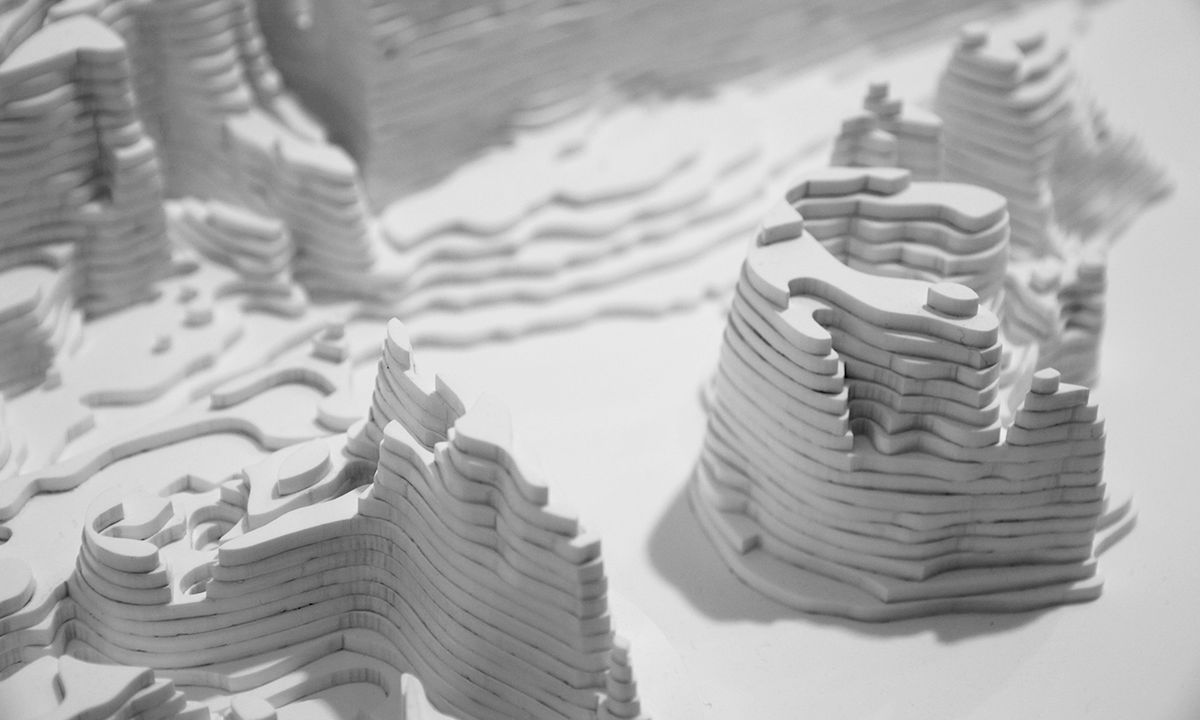
The Persistence of Mountains
In 2011 I presented a solo exhibition called DOUBLE TAKE in which I explored the possibilities of creating and discovering new worlds hidden within well-known imagery. In one of my original works, I derived a landscape topography from the famous Salvador Dali painting The Persistence of Memory, built the topography using lasercut plexiglass, and then created a hand-drawing of the landscape. When viewed from above the familiar image is clearly visible, but from all other angles the viewers are afforded a completely new relationship with the painting they've seen countless times before.
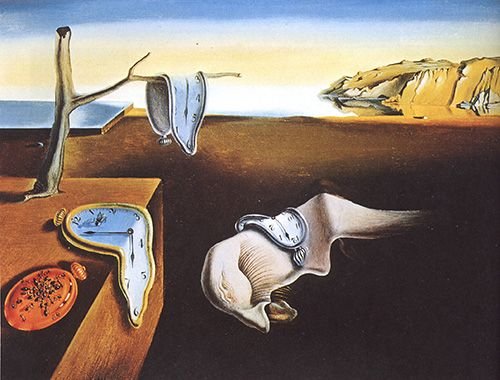
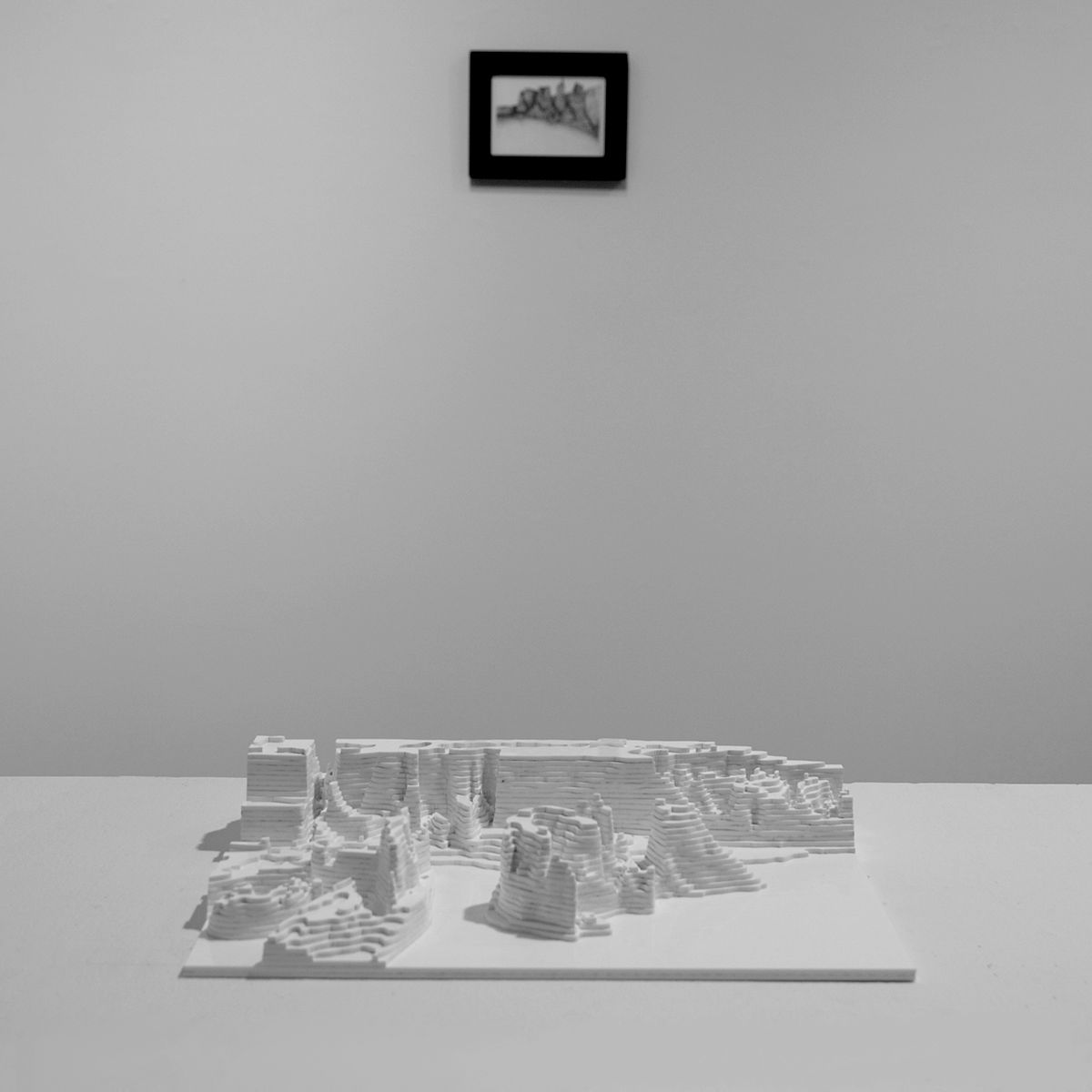
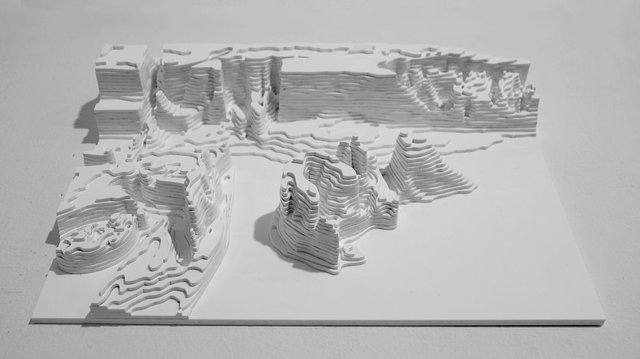
plexiglass acrylic
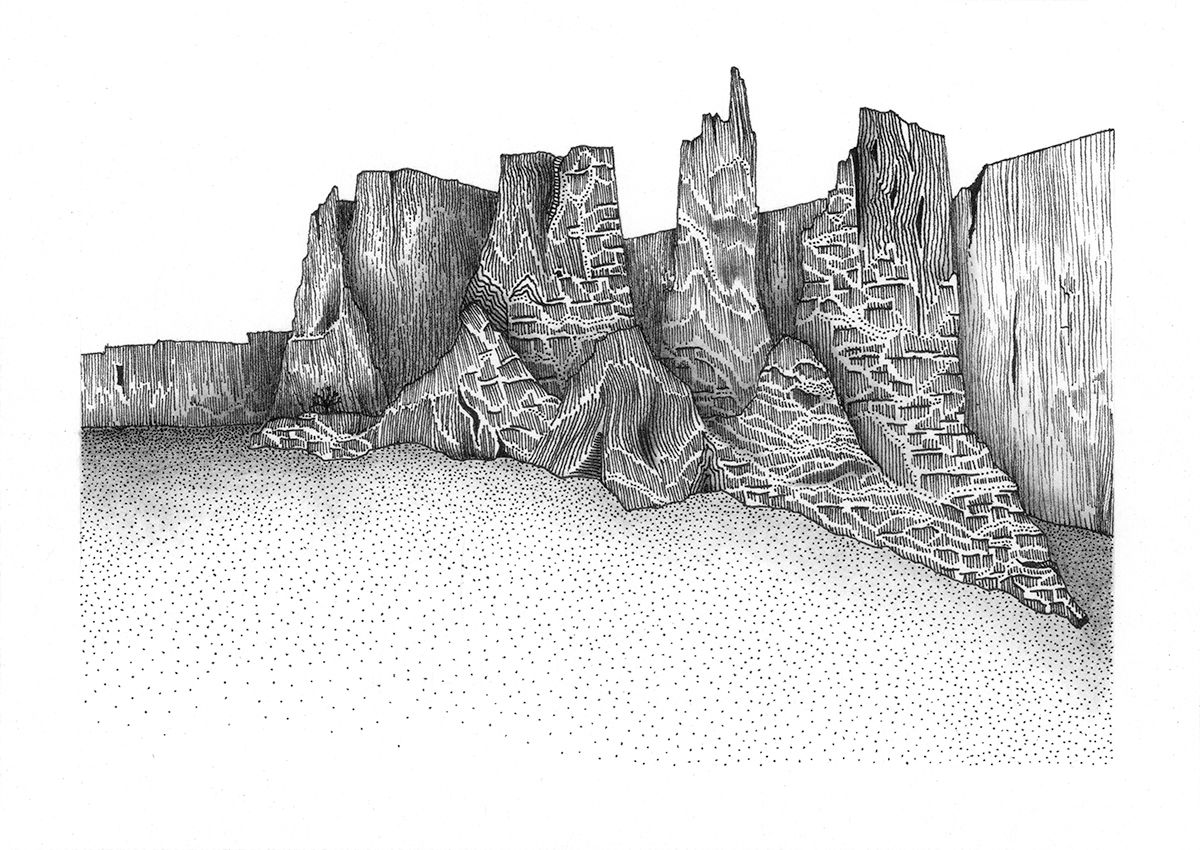
pencil and ink on paper
Exhibition Concept:
Visitors to the exhibition were presented with the following poster upon entry. The blurb at the bottom describes the concept behind the landscape sculptures:
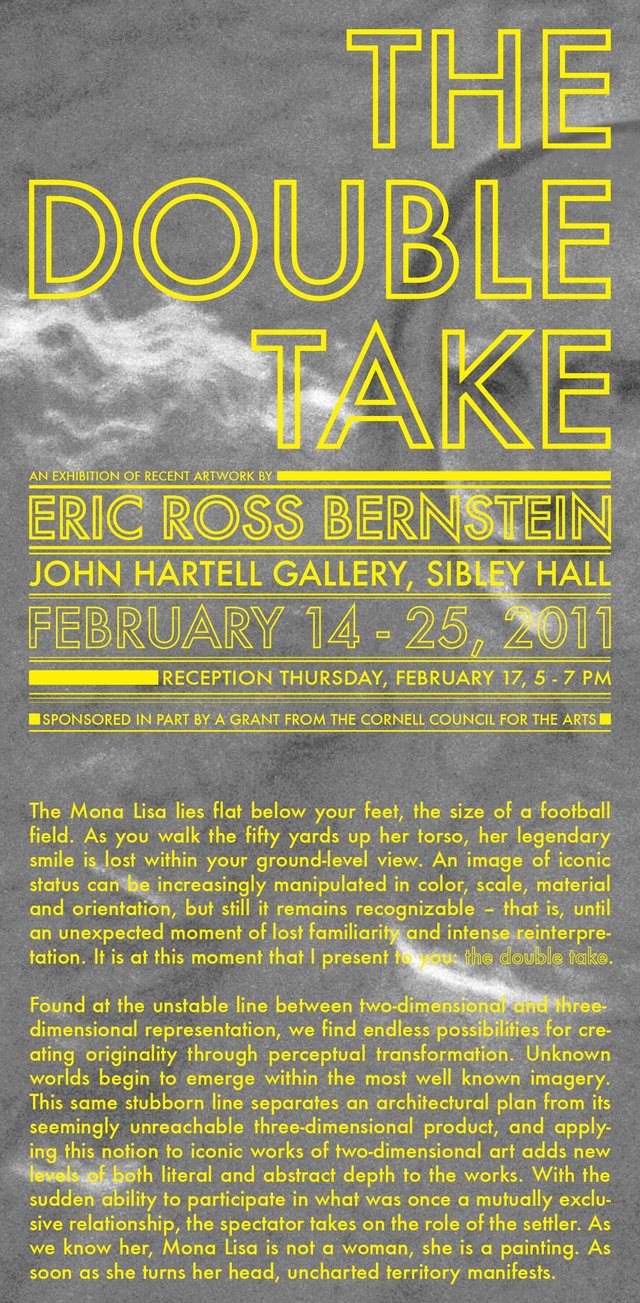
How did I make this?
The process for creating the topography was based on one understanding: the darkest portions of the image should be the valleys and the lightest portions should be the mountains. That way the darkest portions (the field, the shadows) would be the parts of the landscape with the deepest darkest shadows, while the lightest portions (the horizon, the clocks, the figure in the foreground) would catch the most light.
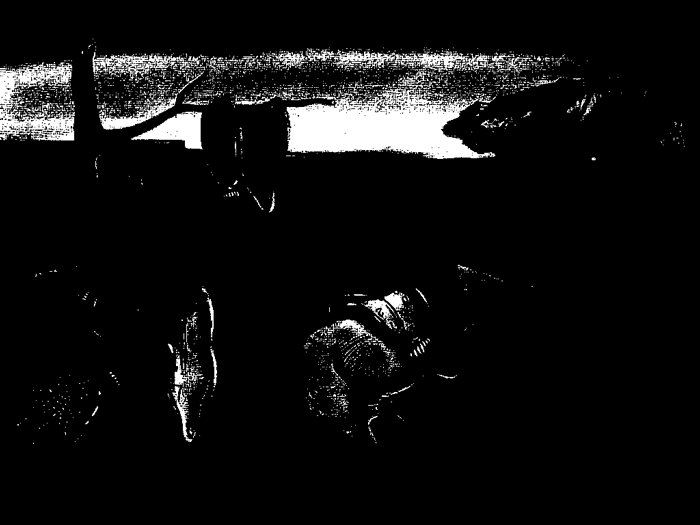
I derived the layers of the topography by taking the image into photoshop, converting it to black and white, and then gradually adjusting the “Threshold” levels. In this way I was able to tease out eighteen layers which start with the lightest portions as the top layer of the topo, gradually getting darker and darker as the layers get lower and lower.
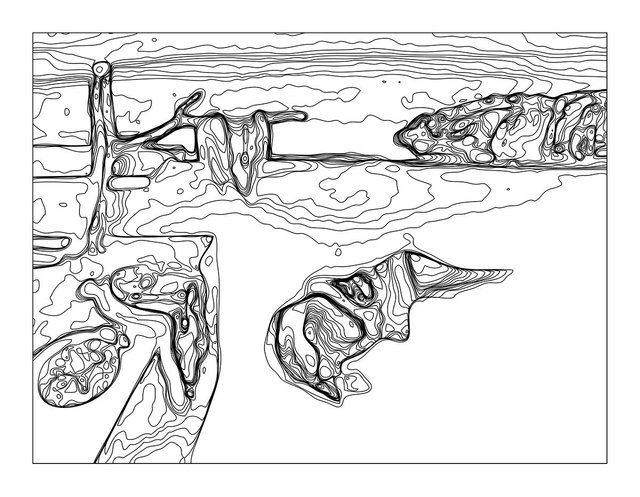
These eighteen layers were then taken into Illustrator and “Image Traced” in order to get the outlines. The next and last step was sending those outlines to the laser cutter and glueing the twenty layers together by hand, one piece at a time!
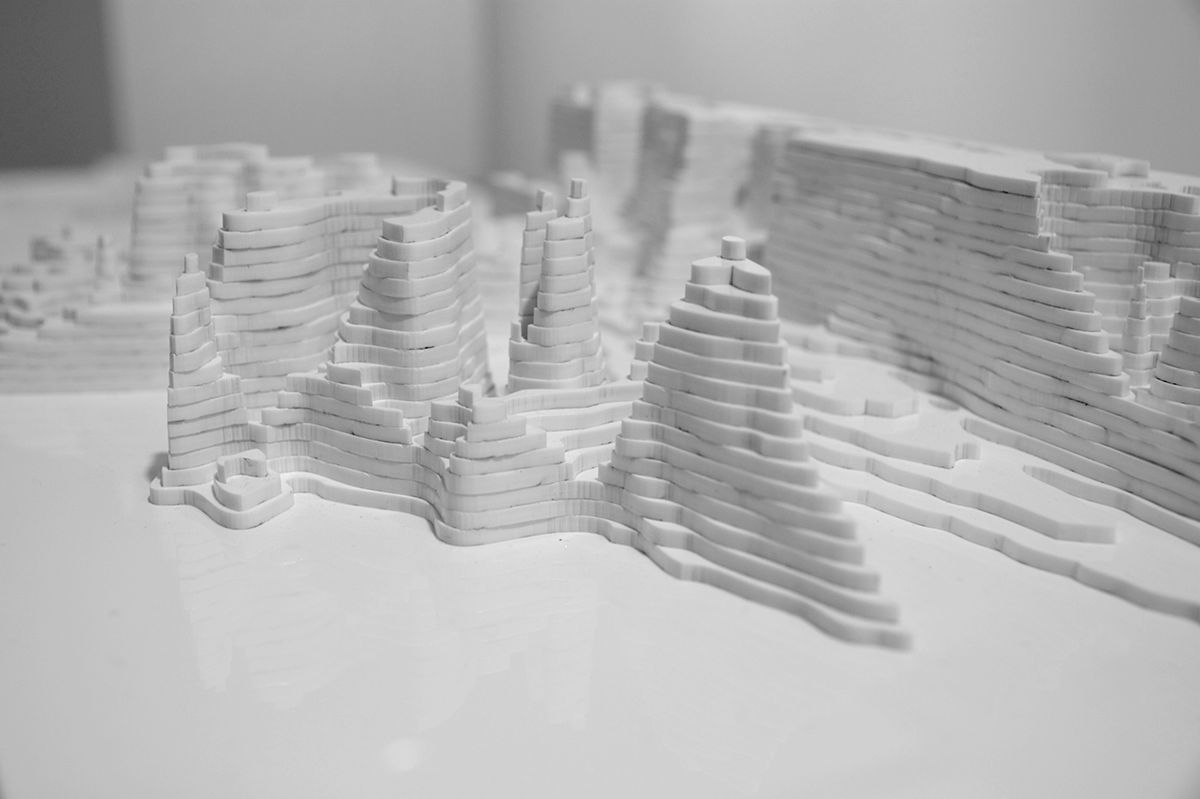
The resulting landscape reminded me a lot of Monument Valley in Arizona, because of the way the rock formations seem to jut out of an otherwise flat plain. The irony is that the resulting landscape of my sculpture actually resembles the landscape in the background of Dali's original painting.
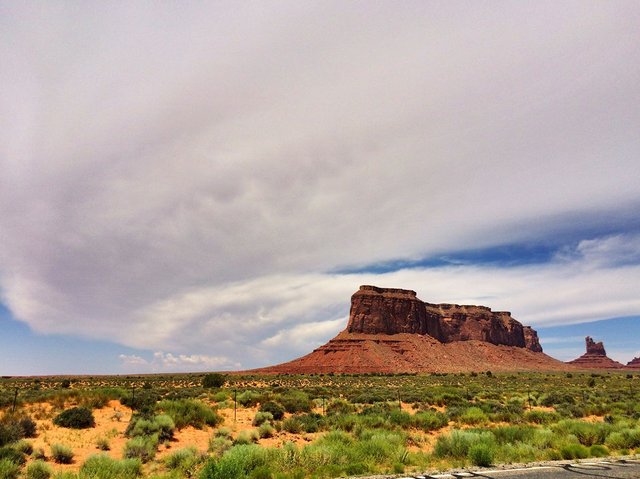
This sculpture/drawing is one in a series of five.
To see other works in this series, check out my previous posts:
Mona Lisa | Girl with a Pearl Earring | Drawing Hands

Your work is simply amazing. You combine two of my favorite things: surreal art and topographic maps. This looks like it takes a lot of time, patience, and technical expertise. Great concept and execution.
Do you think doing the concept in reverse would work too? Say take a topographic map of the Grand Canyon, print it in the same manner, and paint on the layers to bring out a Dali-Esque painting? Oh the possibilities!
Thank you so much for the kind words @nostone-unturned! I really like the idea of doing the same process in reverse! I wonder what image would be uncovered from a map of the Grand Canyon..!?
Wow that stunningly creative!
Though the result doesn't exactly resemble the original paining, I guess there is a "cost" of such a transformation.
Also wonder if image quality can be a contributing factor to alter the final topography?
Also2, it's be interesting to see a top-down shot of the result, just for fun :)
Also3, what I'd love the most is outputting a format that makes these results portable and/or loadable into various 3D game engines like Unity, so off-road racing games might be simulated on them.
Thanks so much @katamori! Yes it was definitely intentional for the result to be unrecognizable from the original, I think that’s the best part, when something completely new can come from something we’ve all seen a million times. It’s only in that top down view that the original is visible. I couldn’t find a top down photo of this sculpture but definitely check out the related posts I listed at the bottom, because I have top down views of those ones and I think the result is pretty cool!
I love the idea of somehow bringing these landscapes into a video game format so you could navigate through these hills. Imagine going through all the different levels and only learning at the very end that you’ve been walking through the Mona Lisa or another famous painting!
Truth be told, this one literally reminds me of the "Utah" map from 1nsane, a Hungarian semi-sandbox off-road racing game, but made in 2000, that's just too old to be compatible with any modern 3D landscape standard.
So I tried to give a more general response but I think you got the idea!